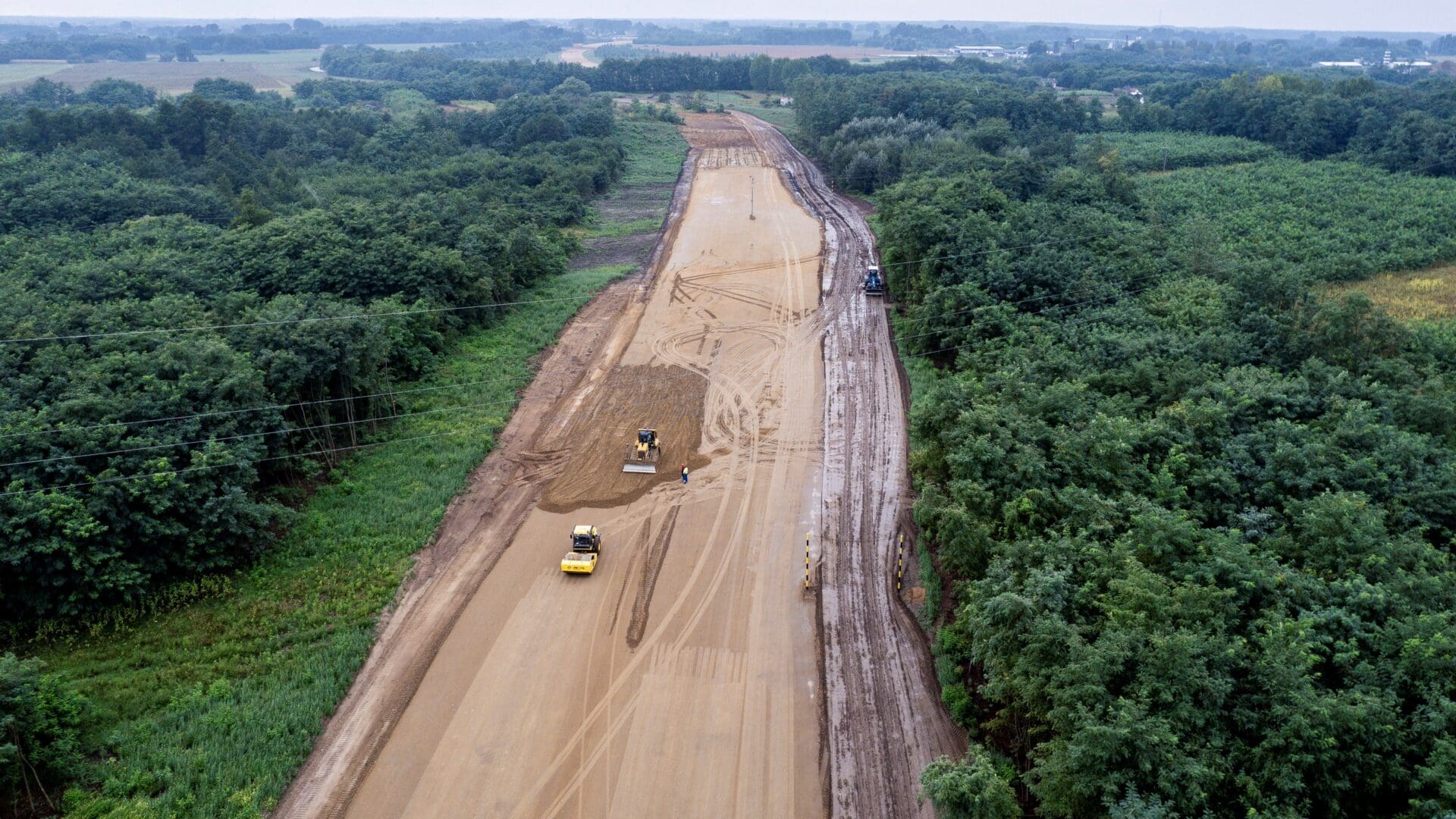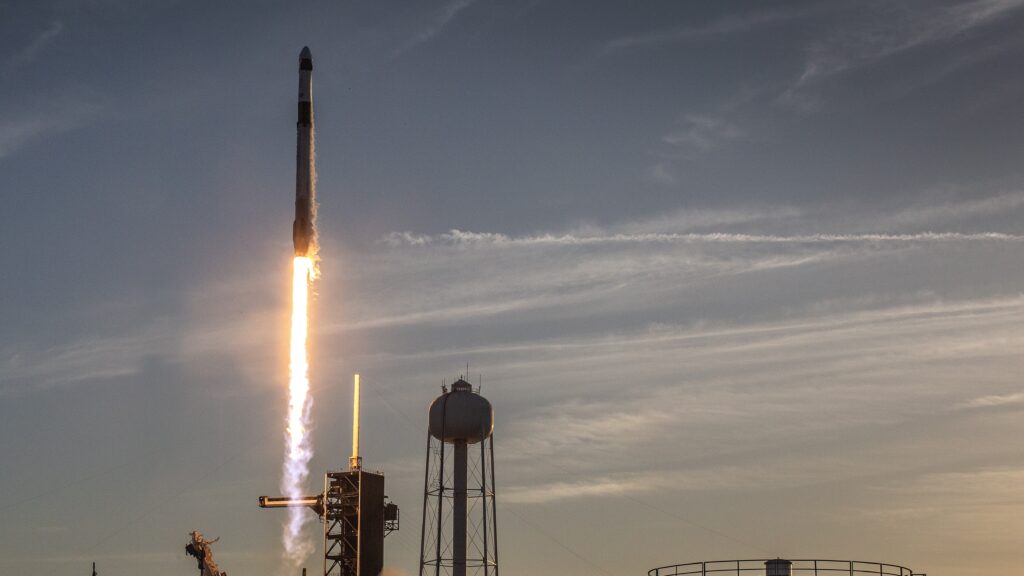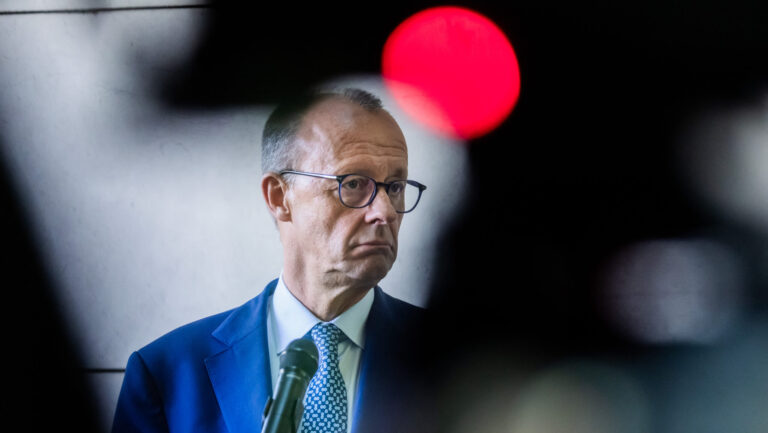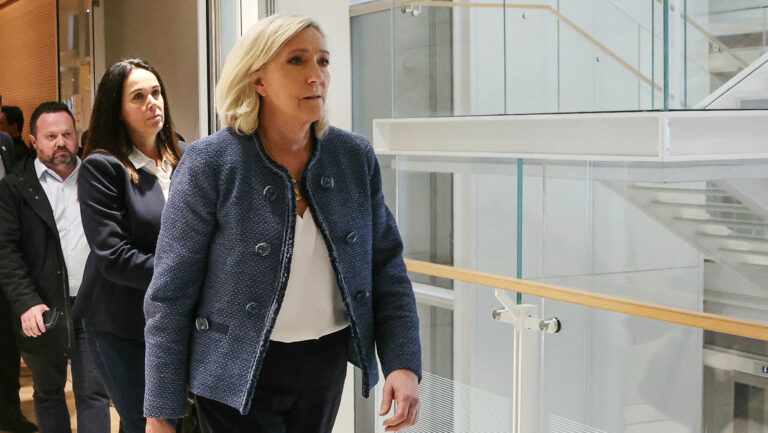If everything goes according to plan, by the end of 2026, thanks to the cooperation with the Romanian government, an expressway will connect Nyíregyháza and Szatmárnémeti (Satu Mare), Minister of Construction and Transport János Lázár said at a press conference at the site of the ongoing construction of the M49 expressway on Wednesday.
János Lázár announced near Nyírmeggyes in Szabolcs–Szatmár–Bereg County that the construction of the first, 28-kilometre-long segment of the expressway being built in two phases between the M3 motorway and the Hungarian–Romanian border has begun with an investment of approximately 175 billion forints by Duna Aszfalt.
Another 17.5-kilometre segment of the expressway will be built at the cost of 150–160 billion forints, the minister said, adding that this will remove the obstacles that have so far hindered economic and social cooperation between the two regions.
The minister recalled that in Hungary about 900 kilometres of a motorway–expressway network have been built since 2010, in the value of approximately 3,2 trillion forints. Last summer the government reallocated resources to serve ‘strategic objectives,’ he added, the most important of which is
to leverage Hungary’s role as a ‘borderland,’ a bridge between two worlds,
between the East and the West, the North and the South, between European and Asian cultures. In order to achieve that, it is crucial to connect the various regions of the Carpathian Basin, Lázár stressed.
He mentioned that the largest motorway investment realised in recent years in Hungary was the construction of the Kassa (Košice)–Miskolc expressway. The government aims to continue this programme by connecting Nyíregyháza and Satu Mare, Nyíregyháza and Mukachevo, as well as Békéscsaba and Arad by road, and Szeged and Subotica by rail. The construction of the M6 motorway up to the national border and the upgrading of Route 6 to an expressway towards Szigetvár are also part of these plans.
‘We also want Győr to be connected to Dunaszerdahely (Dunajská Streda in Slovakia) by a motorway; we have at least a dozen programmes that aim to connect towns located close to each other in the Hungarian countryside through a network of high-speed roads,’ the minister stated. He emphasised that the investment in the M49 is important to establish a new economic zone similar to that around Győr, primarily for the automotive industry, in the Nyíregyháza–Debrecen–Miskolc triangle. This will make it easier for workers to reach their workplaces, Lázár noted. The construction of the M49 is at five per cent completion, with the deadline for the first segment being autumn 2026 and for the second segment December 2026, he added.
Lázár remarked that discussions within the government are also ongoing about extending the M3 motorway to the Hungarian–Ukrainian border by building the M34 expressway to Záhony.
When asked about Romania’s Schengen membership, the minister stated that the Hungarian government explicitly supports Romania being allowed into the Schengen Area, and will work during Hungary’s upcoming EU presidency next year to make this happen as soon as possible.
Szatmárnémeti Mayor and member of the Democratic Alliance of Hungarians in Romania (RMDSZ) Gábor Kereskényi highlighted the significance of the construction of the M49. He mentioned that the feasibility study for the 14-kilometre section connecting the border and the ring road of Szatmárnémeti on the Romanian side has been completed. The compulsory archaeological excavations have been completed, and the technical plan is being prepared, along with the process of expropriation.
Fidesz parliamentary representative of the Mátészalka electoral district Sándor Kovács spoke about how the highway will bring those on both sides of the border closer in terms of employment and infrastructure.
Read more:
Sources: Hungarian Conservative/MTI








